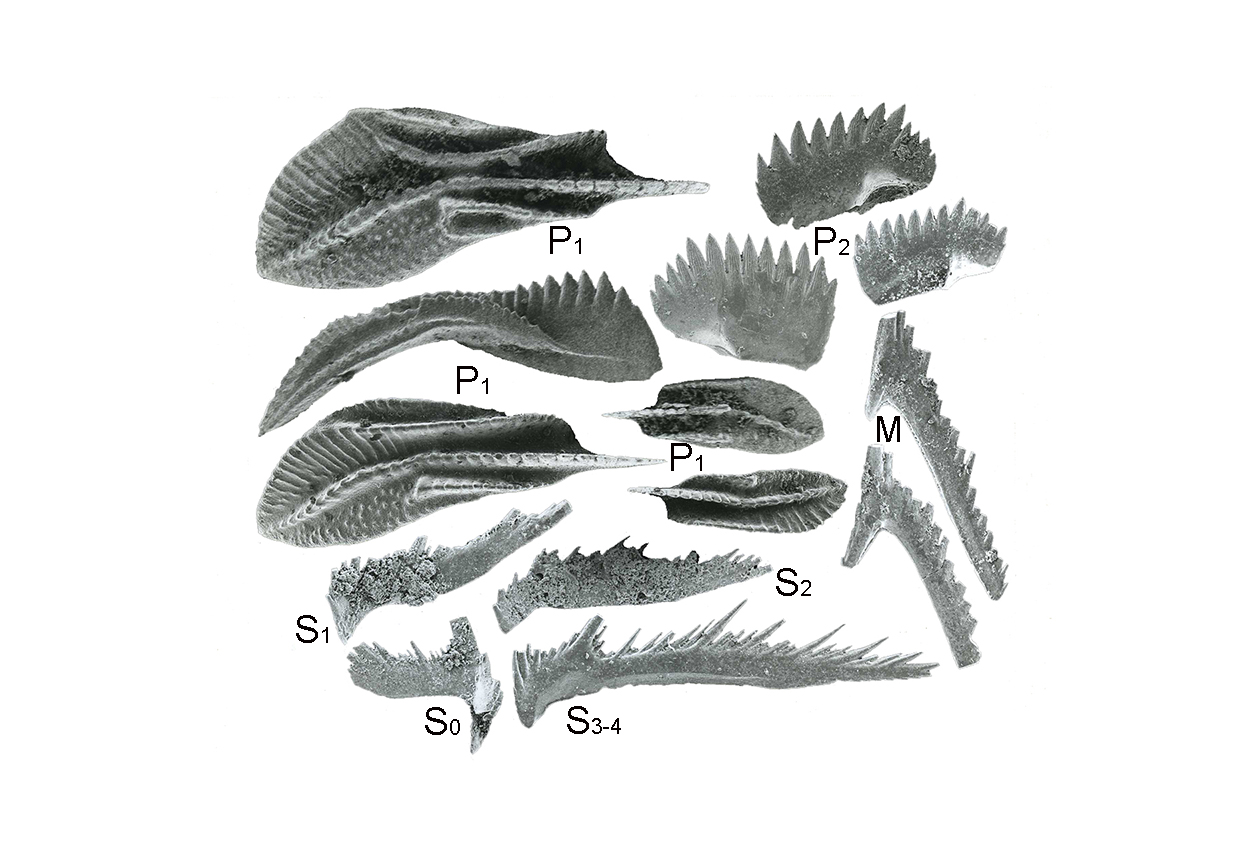Siphonodella cf. cooperi Hass, 1959
Sugerowana cytacja: Moczyński 2016. Siphonodella cf. cooperi Hass 1959. Ikonoteka (http://ikonoteka.paleo.pan.pl/xwiki/bin/view/Species/Siphonodella+cooperi)
Diagnoza
Porównanie Conodonts of this species are the most common near the topmost bed of the Dzikowiec section of the Gattendorfia limestone. Elements P2 are minute, short-bladed, and sharply denticulated. Elements S seem to differ from associated Neopolygnathus purus elements in their shorter processes. The M elements have undenticulated and sometimes almost completely reduced ventral processes. The S3-4 elements are very similar to juveniles of Neopolygnathus, but seem to be separated from them, apart from short ventral processes, in a fan-like arrangement of denticles, usually with the base of the process projecting externally. Autekologia Występowanie geograficzne Zasięg czasowy Tournaisian top of the Gattendorfia limestone. Materiały muzealne ZPAL Literatura Dzik, J. 1997. Emergence and succession of Carboniferous conodont and ammonoid communities in the Polish part of the Variscan sea. Acta Palaeontologica Polonica 42, 57-170. |
|


